|
When I visited the Diözesanmuseum Brixen in Italy last year, I was captivated by one chasuble particularly. It wasn't particularly old or made with extraordinary skill. But to me, it just screamed: FUN to embroider. And I had seen this particular technique before on an unfinished sampler in the collection of the Wemyss School of Needlework in Scotland. The particular pieces were made with fibrant coloured silks in a simple couching technique (Bayeux Stitch) and seem to originally date to the 17th century. Then my internet search began. I proved not to be the first to write about 'Italian couching'. In 2007, Mary Corbet wrote an article about 'Italian Stitching' on her blog Needle 'n Thread. Through the related articles, I found the book Mary had originally consulted: Church Embroidery and Church Vestments by Lucy MacKrille written in 1939. You can download it for free here. If you like goldwork embroidery and embroiderying with silk, you'll love it! And what does it say on 'Italian Stitch'?: Italian stitch in which stout floss is used for a foundation is the most beautiful of stitches. The floss is stretched across the surface from end to end of the design, care being taken not to twist a fibre, so that when the surface is covered it will be as smooth as satin. The finest gold thread is then laid across the silk in lines one-eight of an inch apart and couched evenly. The beauty of this stitch depends on the glossy smoothness of the floss, the straightness of the lines of gold, and the evenness of the bricking or couching stitches (MacKrille, 1939 p. 27-28). Hmm, not my 'Italian Couching' after all. The examples I saw in the Museums in Northern Italy were al couched with matching silks, not with gold thread. Could it be that 'Italian Stitch' was actually an Anglo-American invention and not of true Italian origin? Let's check with Pauline Johnstone writing on Italian Embroidery in 'Needlework: an illustrated history' edited by Harriet Bridgeman and Elizabeth Drury from 1978. There it says: An alternative technique was laid and couched work in colored silks, crossed and held down by spaced lines of gold thread. ... Many vestments of this type are attributed to Napels, where the Kings of Napels and the Two Sicilies held a wealthy and lucurious court (Plate 45). (Johnstone, 1978, p. 143). So, what does Plate 45 show? Not much in a book from 1978. It is in colour, but a whole chasuble at only 10,2x9,3 cm, doesn't tell a whole lot. Luckily, this particular chasuble is held at the Victoria & Albert Museum in London. And they have a digital archive! You can find the entry for the chasuble featured in the 1978 book here. Lo and behold! This is indeed the needlework technique I have seen in a few pieces in Northern Italy and the unfinished sampler in Scotland. And as you can see, the laid silk is couched with a matching silk thread. Not with a gold thread.
So, can you see what happened here? An authority on 'modern-day' church embroidery from America, but who studied embroidery in England, wrote on a couching technique with silks and gold thread she had learned and used in 1939. Later researchers on Italian needlework presumed this was a historical technique used in 17th century Italy. They had a bad photograph from the V&A collection and a brief description naming floss silks and silver-gilt thread. Combining the two into a Bayeux stitch with silks and gold thread. Now don't get me wrong. The Itialian Stitch embroidery executed by both Lucy MacKrille and Mary Corbet looks absolutely stunning. But it does not seem to have been a historical needlework technique in use in 17th century Italy. However, if you have come across a historical piece made in Italy which does use gold thread as the couching, please do let me know! In the mean time, I'll keep my eyes peeled for more pieces in this fascinating technique.
16 Comments
Yeah, I have re-surfaced after a nice long break over the holidays. And I have big plans for 2018. Actually, some were not only conceived during my lovely break, but put into action as well. So what have me and my husband been up to? For starters, we re-decorated my studio and changed its lay-out. We repainted the walls and ceiling in a pretty blue colour; like the egg of a blackbird. Then I put in a large set of map drawers. Perfect for thread storage, if you have the space for such a monster. This will save me so much time searching for the right threads. And it will hopefully prevent me from buying the same supplies twice... My clever husband installed a professional art gallery hanging and lighting system to display my framed embroideries beautifully. Of course not as easy to install as the instructions claimed, but a bit of swearing sometimes helps :). I am pleased as pie with the results: Next up: the checkout of my webshop. As not all people seem to like PayPal, I installed a few more payment options. You can now also use your credit card, Apple Pay and Android Pay through a Stripe interface. Unfortunately, my website host Weebly has not enabled SEPA or Ideal in its Stripe interface yet. I keep nagging them about it, so hopefully they will expand the interface in the future. I've also amended my opening hours. Since my doctor has strongly recommended that I take up swimming to prevent my shoulders and hips from becoming too painful to embroider, I duly dip in the pool three times a week. As the pool is not exactly next doors (and the lake in front of the house frozen over), it takes a few hours out of my working week. Luckily they have great water slides! My new opening hours are: Monday & Friday 13-17h and Tuesday & Saturday 9-17h. And what's in store for next year? I am planning to keep traveling to see more historic embroideries. There is so much out there! But unfortunately, little is known about it in the wider embroidery community. Not in the least due to language barriers and a false sense of national/regional pride and protectiveness. That's a real shame. My idea is to publish a few ebooks on specific historical embroidery techniques with references to places where you can study the originals. The ebooks will contain pattern drawings and step-by-step explanations so you can try your hand at it too. First up is Italian couching from the 17th century. In essence it is Bayeux stitch using silk instead of wool. After all, the Italians are not known for huge flocks of beautiful sheep :). But they were the first to produce silk in Europe.
That's all for now. Time for a cup of coffee, before digitising some more embroidery patterns. Have a nice week! As part of the 'Samt und Seide 1000-1914. Eine Reise durch das Historische Tirol' (Velvet and Silk 1000-1914. A trip through historical Tyrol) exhibitions organised by the European Textile Academy, I and my husband visited Brixen/Bressanone and Klausen/Chiusa. We were completely blown away with the high quality embroidered textiles we saw and are already planning two more trips. Unfortunately, for most of you, Northern Italy is a bit further away than our three-hour drive. However, if you are ever in the neighbourhood, do visit the two museums I am going to introduce you to further below! They are absolutely worth it. And do take a print-out of this blog with you if you are not proficient in either German or Italian, as English is not the lingua franca in Northern Italy... First up is the Diözesanmuseum in Brixen. It houses the cathedral treasure of the former Diocese of Brixen. A large part of their permanent exhibition is devoted to textiles. The oldest being from around 1000 AD! However, this museum follows the modern concept of presenting historical art as art. Descriptions of the individual objects are very meagre and only available in German and Italian. There is nothing wrong with appreciating pieces as they are and enjoying the display in front of you. However, I would have liked to have the option of getting more information. Preferably as laminated information available in the display room AND a decent catalogue to take home. After all, I like to go to museums to learn and broaden my knowledge. That said, the sheer amount of high-quality exhibition pieces gets you into textile heaven in no time. My favourite pieces were the oldest pieces. Just the idea that the Eagle Chasuble (Adlerkasel) dates to 1000 AD. It was made at the court of the Emperor of Byzantium and given to Bishop Albuin of Brixen. It was probably one of the first silken vestments which arrived in this part of Europe. Due to its great antiquity and pretty good conservational status, it is one of the most important textiles of Europe. Another highlight were these pontifical gloves dating to the 15th century. They feature email medallions from 11th century Byzantium, showing again how important this imperial city once was in medieval Christian Europe. And aren't these tiny beads made of freshwater pearls to die for? I definitely want a pair! The museum also has several 15th. century orphreys on display. These heavily embroidered gold- and silk pieces were once appliqued onto a chasuble. Look at those couched diaper patterns forming a pretty background for the holy figures. Just unbelievable that someone cut through them to make them fit onto a new vestment... Then there were 17th. century chasubles with colourful silk and goldwork embroidery. I particularly liked the one with the small and detailed flowers. Look at the iris worked in long-and-short stitch and then further embellished with tiny fly-stitches to give the speckled impression often seen on an iris. The other chasuble shows a particular style of silken laid-work with couching stitches I first encountered on an Italian piece in the Wemyss School of Needlework Archive. I think it is very colourful and pretty. Great sources of inspiration! The next museum we visited was the Stadtmuseum in Klausen/Chiusa. They have by far the better (=higher quality embroidery) textile collection and it is displayed in such a way that you can get very close to the pieces and the lighting is excellent. Unfortunately, I wasn't allowed to take pictures. I didn't know I wasn't allowed to take any, so I can at least show you an antependium, or altar cover, from the Loreto treasure. And I (and the very friendly museum wardens) hope that it will whet your appetite so that you plan a visit too. And that you will help spread the word that this museum has a textile collection of high importance. As they are a tiny museum with an equally tiny budget, they need our help. So please show them some love. But first, let me tell you a little bit more about what is called the Loreto Treasure. Maria Anna of Neuburg became queen of Spain, Sicily, Naples and Sardinia when she married king Charles II of Spain in 1690. She brought with her her confessor Pater Gabriel Pontifeser born in Klausen. He was a trusted and loyal advisor and she pledged to build him a monastery in his hometown of Klausen. The house he was born in was turned into a Loreto chapel. Queen Maria Anna, her husband and the Spanish nobility gave beautiful religious objects to the chapel. The Loreto treasure was born. Permanently on display in the museum are several highly decorated altar covers. Apart from the one displayed above, which was probably stitched in Sicily, there is a further piece stitched in wool on linen and a silk- and goldwork piece in the Ottoman-style. Interestingly with the piece I was able to photograph, the main part with its flowers, birds and butterflies is stitched with long-and-short stitch. However, the border shows the same laidwork technique as seen before on the chasuble in the Diözesanmuseum Brixen. Besides silk and gold threads, the piece is adorned with red coral beads. This piece is truly to die for! It is very seldom that you encounter embroidery of such high quality that has kept so well. Other spectacular pieces were several chasubles with the same high-quality silk and goldwork embroidery. If you are ever near, this is a museum not to be missed! I for my part, will be back to study these pieces in greater detail.
|
Want to keep up with my embroidery adventures? Sign up for my weekly Newsletter to get notified of new blogs, courses and workshops!
Liked my blog? Please consider making a donation or becoming a Patron so that I can keep up the good work and my blog ad-free!
Categories
All
Archives
July 2024
|
Contact: info(at)jessicagrimm.com
Copyright Dr Jessica M. Grimm - Mandlweg 3, 82488 Ettal, Deutschland - +49(0)8822 2782219 (Monday, Tuesday, Friday & Saturday 9.00-17.00 CET)
Impressum - Legal Notice - Datenschutzerklärung - Privacy Policy - Webshop ABG - Widerrufsrecht - Disclaimer
Copyright Dr Jessica M. Grimm - Mandlweg 3, 82488 Ettal, Deutschland - +49(0)8822 2782219 (Monday, Tuesday, Friday & Saturday 9.00-17.00 CET)
Impressum - Legal Notice - Datenschutzerklärung - Privacy Policy - Webshop ABG - Widerrufsrecht - Disclaimer

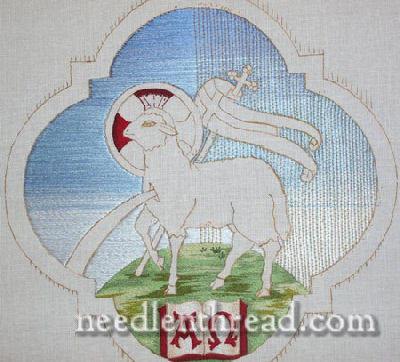
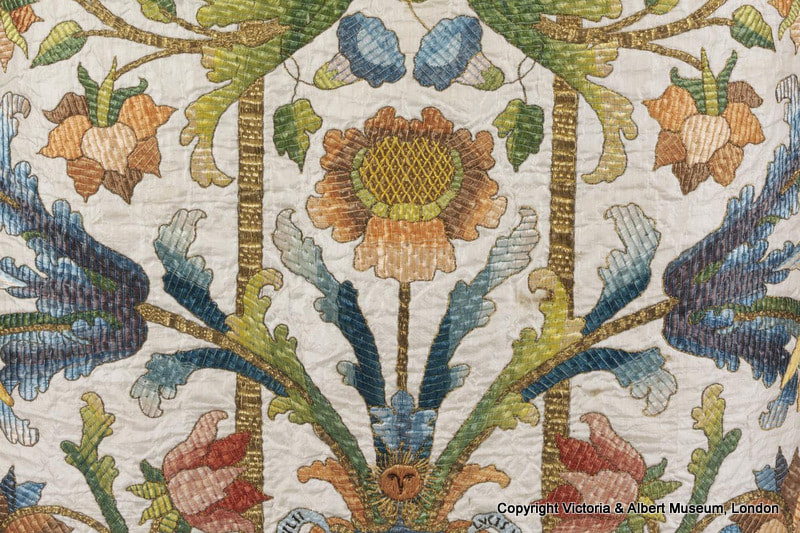
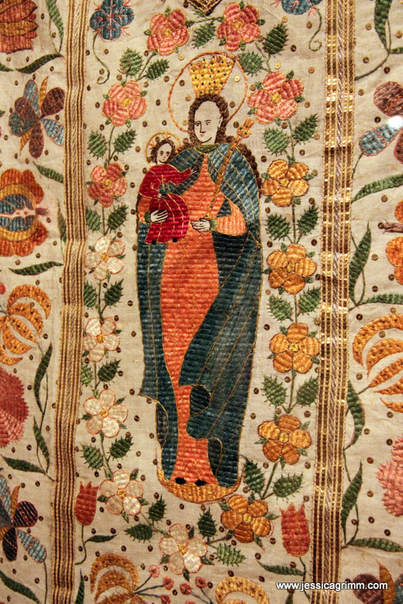
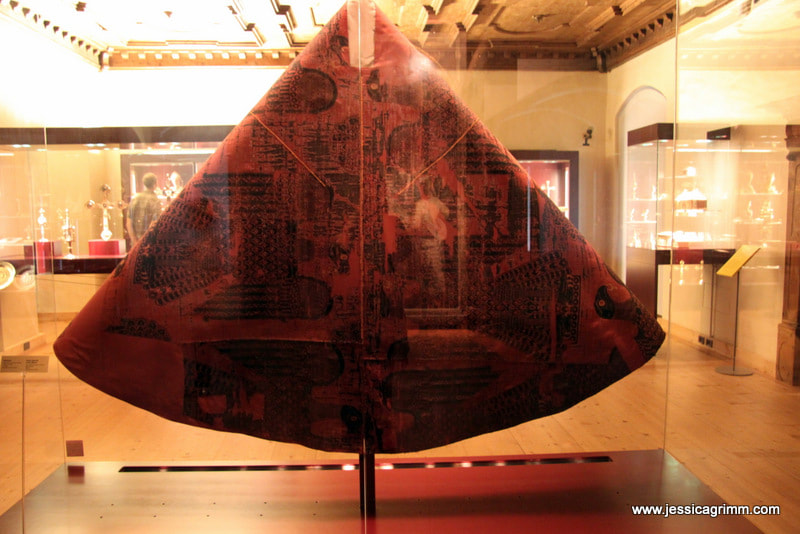
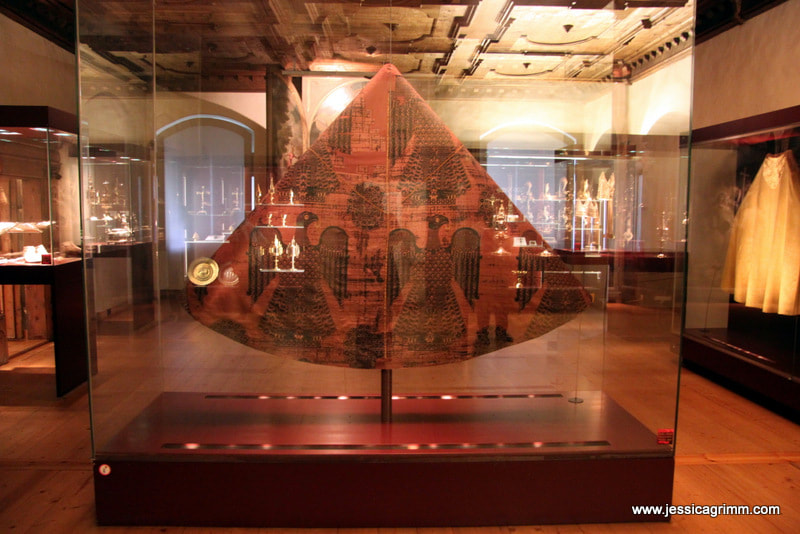
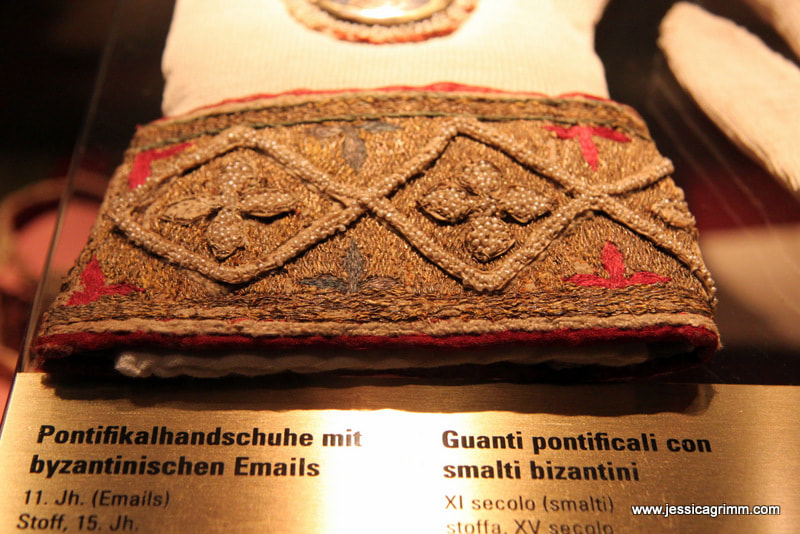
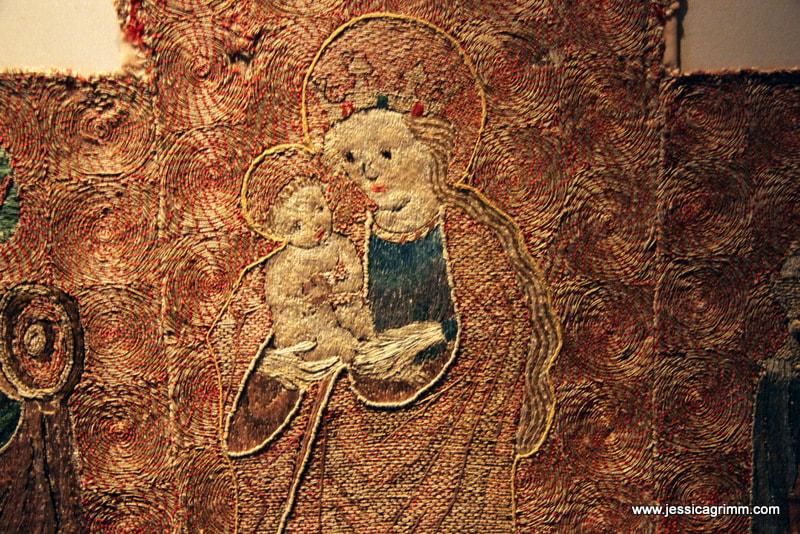
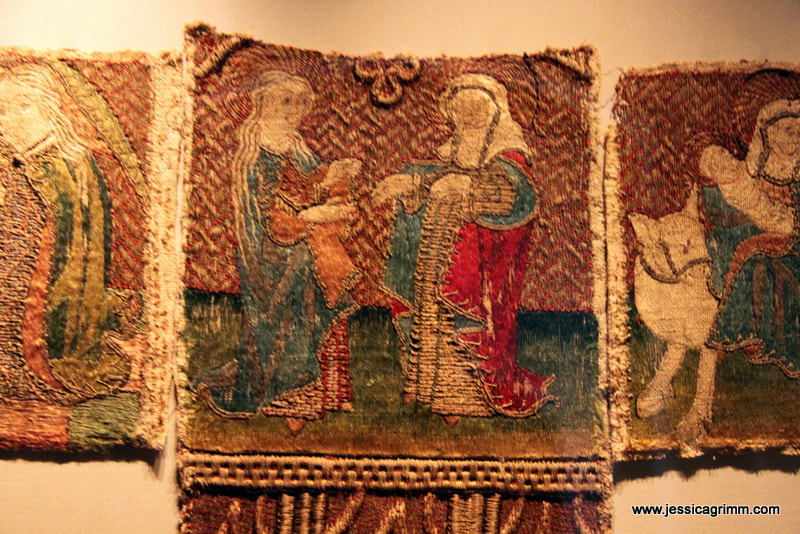
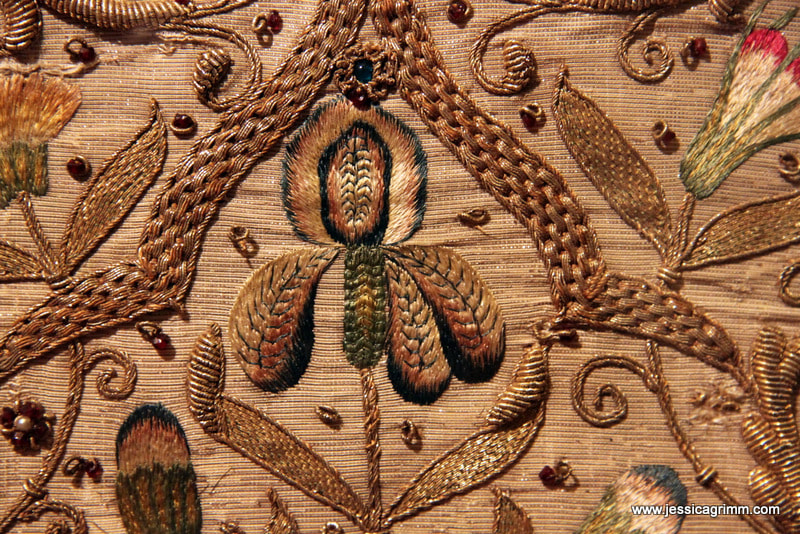
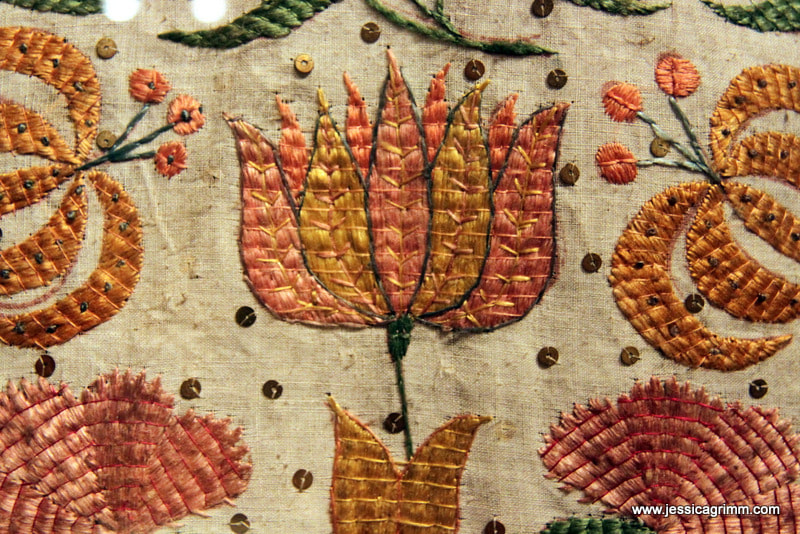
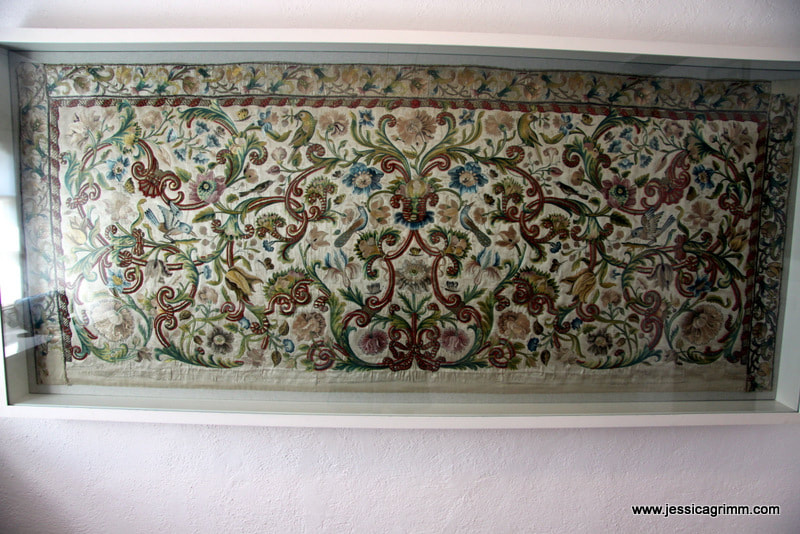
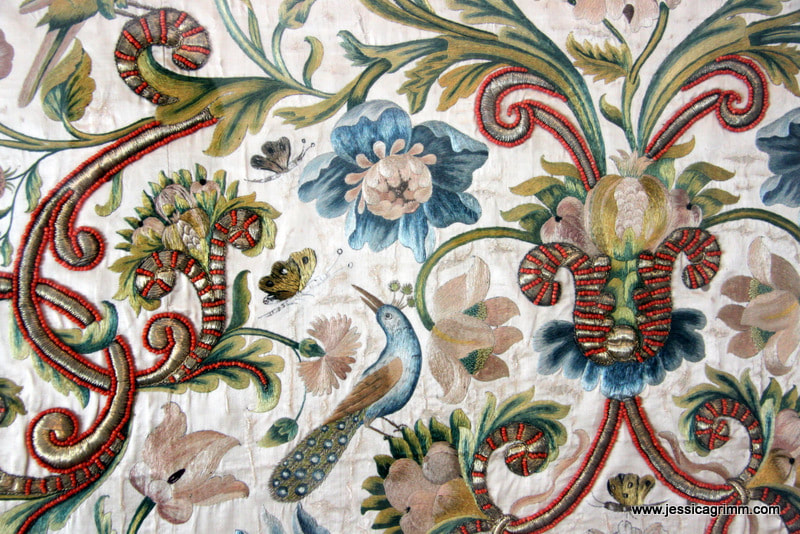
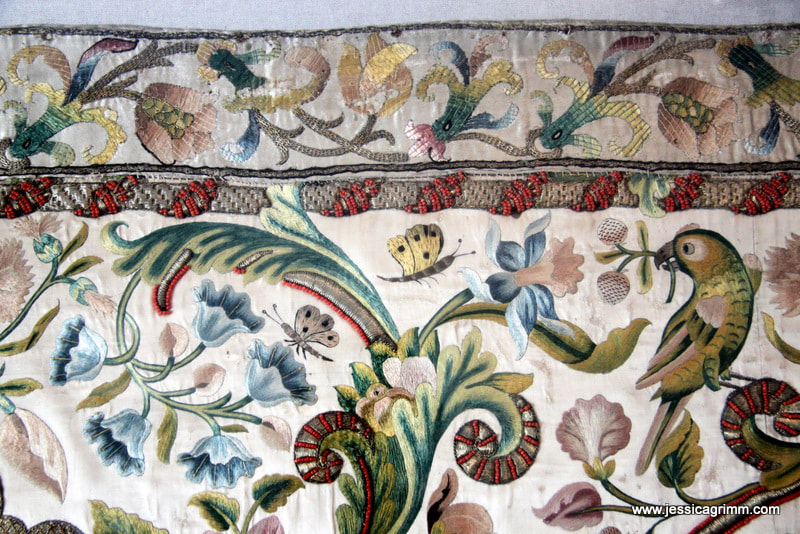





 RSS Feed
RSS Feed